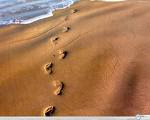Tarsal tunnel syndrome results when the posterior tibial nerve is compressed within the tarsal tunnel. This is similar to carpal tunnel syndrome that you can experience in the wrist. Both of these conditions result when a nerve is pinched within a confined space. When space becomes tight, the tibial nerve is pinched.
Patients commonly complain of numbness over the bottom of the foot, as well as complaints of pain, burning, and tingling over the base of the foot and heel. It can be confused with plantar fascitis or heel spurs.
It can be caused by the result of a fracture, bone spurs, ganglion and other benign tumors, muscle impingement or foot deformities.
To diagnose this condition can be confusing. Tapping on the nerve as it passes through the tarsal tunnel, or the Tinel's Test may create the symptoms and indicate tarsal tunnel syndrome as the cause of the problem. An EMG test would show how well a pulse of electricity conducts through the nerve may help with the diagnosis.
Treatment begins with an anti-inflammatory medications and possibly a cortisone injection into the area around the nerve. Orthotics and change in footwear may also help to relieve the symptoms.
It none of these help then a surgical procedure may be necessary to release the tarsal tunnel. When this procedure is preformed an incision is made to open up the tarsal tunnel and decrease pressure on the posterior tibial nerve. This would be similar to a carpal tunnel release in the wrist.
So if you are experiencing any of the above symptoms give the office of Dr. T.F. Vail a call to see if this could be your situation. 419-423-1888





